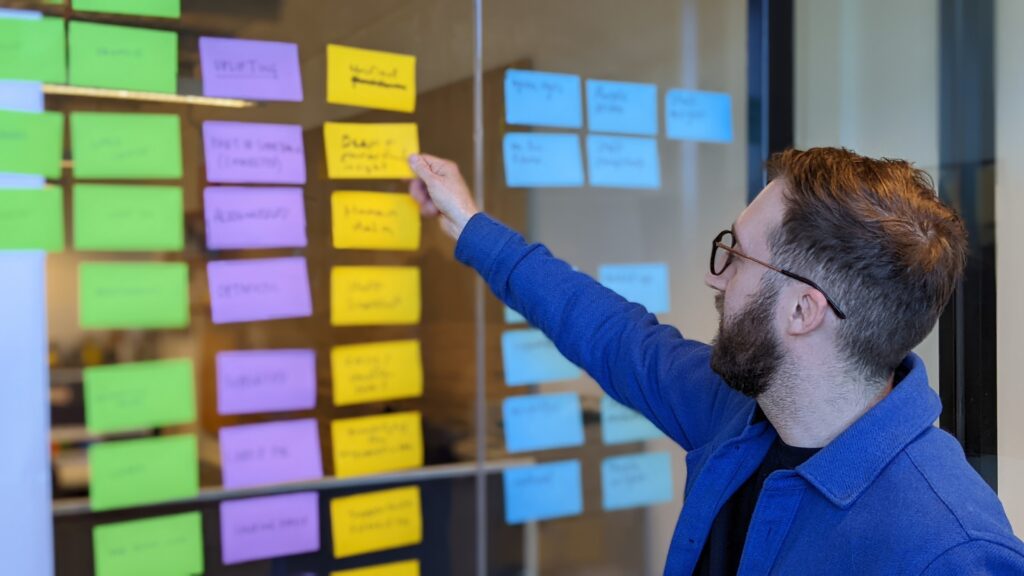How to get the most out of a Branding agency workshop even when you’re under the weather.
I was just introducing the second group exercise for a huge branding workshop when I noticed a faint tickle in my throat. Facilitating a workshop sounds like an easy job on the surface, but so many things can go wrong from the jump that facilitators put in tireless preparation before kick-off.
Sometimes, that preparation gets the best of you though as you ignore your own tiredness driven by the need to account for all the attendees in a meeting. Originally, as I tried to choke my way through my sentence, I dismissed it as nothing more than a passing irritation. However, as the clock ticked down the minutes to the end of the session, my throat began to scratch more insistently. I cleared my throat repeatedly, hoping to silence the growing discomfort.
There’s more to making a workshop successful than having a practical (and healthy) facilitator. Having the right people, an adaptable approach, and a commitment to data-driven decisions are critical.
Why the Right Team Matters
Before my nose began to run like a faucet that someone forgot to turn off, we had ensured that our client knew that a branding workshop is a collaborative endeavour where key decision-makers must be present. Whether you’re working with a branding agency or an in-house design studio, assembling the right team can make or break your brand strategy. To ensure a successful workshop, consider using a Responsibility Assignment Matrix (RAM) at the outset of your branding or design project.
RAMs have evolved significantly since Edmond F. Sheehan’s original RACI model from the 1950s. Over time, this model evolved into the DACI model, introducing the ‘Driver’ role, which is particularly useful in governance, risk, and compliance matters. Subsequently, the CLAM model (Contribute, Lead, Approve, Monitor) expanded the framework by adding a ‘Monitor’ role, making RAMs even more comprehensive.
No matter which one you choose, a well-understood assignment matrix ensures projects are delivered on time and within budget, and all team members understand their contributions to a project’s success. The sniffling slob at the front is there to simply capture everyone’s contributions and critical insights.

Data-Driven Decision Making
Probably my worst trait is that, as my fever rises and my muscles start to ache, I start to run short of patience. That can spell disaster when you’re being tossed unfounded opinions left, right and centre. During a brand workshop, as the tick of the clock grew louder, and a mild headache set in I had to insistently remind myself that opinions are just assumptions until confirmed by data. To create a strong brand strategy, brands must rely on facts and figures. Branding agencies that use an evidence-based market orientation lead their client’s by helping them put the most pressing concerns, immediate needs, and personal preferences of the consumer base into the context of product or service features.
In the context of a workshop, that means being open to the fact that any opinions not based on evidence are simply assumptions to be tested and validated. Typically, using the workshop to collect these assumptions, a robust strategic branding agency can then measure the consumer base’s attitudes and behavioural traits, enabling clients to adapt to changing circumstances and enhance their competitiveness.
Understanding what consumers view as their immediate needs, primary concerns, or personal preferences within a particular product category sets a base for companies to follow up with additional timed data analysis to reveal trends and consumer desires over time, giving companies a competitive edge over less sophisticated brands and leading to much fewer throbbing headaches down the line.
The Role of a Skilled Facilitator
In any brand workshop, having a skilled facilitator is paramount. A great facilitator isn’t someone who simply imposes their ideas on the group as the keep glancing at the wall, waiting for time to run out. It is someone who guides the process while being adaptable to input.
A facilitator can offer an objective viewpoint and ensure that discussions stay on track and goals are met. They can handle disagreements and conflicts within the group, leading to more constructive discussions.
They should even be able to change their approach on the fly to align with the needs and dynamics of the group while realising that they are battling a full-blown flu – Nose running like a marathon, throat dry as sandpaper, a pounding drumbeat sounding in the temples.
But at the end of the day it’s the team that contributes that makes the most of a brand workshop, ensuring that everyone leaves with a robust understanding of how their inputs will be utilised to build a successful brand strategy and what will come next.